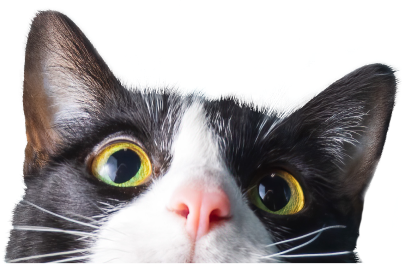The advent of artificial intelligence (AI) in veterinary medicine brings with it the potential to touch – and even transform – every area of life in the clinic, from client communication to diagnostics. In the area of practice management, AI has the power to make teams more efficient and reduce stress.
But when used without intention, AI also has the potential to erode the concepts that anchor the veterinary industry: the human-animal bond and human-to-human connections.
You can’t earn a pet owner’s trust through an algorithm. And if that statement remains true, veterinary teams must continue to build trusting relationships through empathy, conversation, and face-to-face interactions. So, how can veterinary teams integrate AI tools in a way that improves efficiency without compromising connection?
At Provet Cloud, we approach AI by incorporating small changes that make the most significant impacts while minimizing the potential for harm. Here’s where AI can add value to the veterinarian-client-patient relationship (VCPR), and where it risks becoming a barrier to care.
Targeted artificial intelligence in veterinary practice
Obviously, not all tasks in veterinary practice demand a human touch. Offloading repetitive, time-consuming duties to AI can free up time and energy for teams to prioritize patient interaction and client communication.
Examples of AI tools that can support, but not replace, human connection include:
- AI scribes that reduce the burden of medical recordkeeping, allowing veterinarians to maintain eye contact with clients and focus during exams.
- Chatbot-style front desk tools that streamline scheduling, answer routine questions, and direct other communications, helping CSRs spend more time on meaningful client interactions.
- Language generation tools that provide personalized discharge summaries, reminders, and follow-up emails based on patient SOAP input and historical records.
AI tools support the human-animal bond when they serve as a digital assistant, not a decision-maker. Used judiciously, they create space for veterinary professionals to take better care of pets and validate pet owners’ concerns by observing more closely and responding empathetically.
Tools that entirely replace human interaction, especially in emotionally sensitive situations, can feel cold and impersonal, potentially damaging client relationships. Unsupported clients may struggle with making medical decisions for their pets, which can ultimately harm the human-animal bond. No AI platform should be used to deliver bad news, navigate euthanasia decisions, or act as the sole source of treatment advice.
The risks of over-automation
When AI is overused or implemented without care, veterinary practices risk:
- Damaging client trust if pet owners feel they’re speaking to bots instead of people.
- Losing team engagement if team members rely too heavily on automation and less on relationship-based communication or critical thinking.
- Introducing bias or errors if AI models are trained on incomplete, outdated, or skewed data.
A minor misstep, such as sending a generic, automated condolence message, can leave a lasting negative impression. Veterinary teams must be intentional about how and when they use AI, and how their actions could impact the human-animal bond and VCPR.
Veterinary AI best practices to protect the personal touch
To ensure AI strengthens rather than undermines the human-animal bond, veterinary teams should:
1. Use AI to enhance human strengths
Let AI handle tasks that drain time but don’t require emotional nuance, such as summarizing records, filling in SOAP templates, or flagging abnormal data trends. The AI’s work must be reviewed, but the time savings will be significant enough to reinvest in client communication, team bonding, and patient care.
2. Make transparency a priority
If your practice uses AI tools, inform clients about how and why they are used. Choose AI platforms you can trust, and reassure clients that their information and their pet’s healthcare are secure. Position AI as a supportive technology that helps your team focus on pets rather than on shortcuts.
3. Choose tools that match your culture and meet your challenges
Each veterinary practice is different. A busy emergency hospital might benefit from triage support, while a family-owned, rural clinic might prioritize communication and engagement tools. Select AI tools that address your team’s workflow pain points and align with the clinic’s values.
4. Maintain human oversight
AI tools can’t replace clinical judgment, regardless of their purported genius. Create protocols that require team members to review all AI-generated outputs or suggestions, especially if they involve diagnostics or medical decisions.
5. Evaluate regularly
Just as you’d reassess any new workflow, product, vendor, or team member, check in often to ensure your AI tools are working as intended. Are they helping or hindering the team? Are clients responding positively?
When chosen carefully and integrated thoughtfully, AI in veterinary medicine can amplify the best attributes of veterinary professionals, including client connection and support for the human-animal bond. Veterinary teams that embrace AI as a partner, not a replacement, will be best positioned to thrive in a high-tech future without losing the heart of the profession.
Key takeaways
- AI is most effective when it supports the human-animal bond rather than replacing human interaction.
- Automation is best suited for administrative tasks, documentation, and routine messaging, not for emotionally complex conversations.
- Veterinary teams should prioritize transparency, oversight, and cultural fit when implementing AI tools.
- The right tools can give teams more time for meaningful interactions with clients and pets.
Preserve the human touch with Provet Cloud
Artificial intelligence can lighten the load for veterinary teams, but it can’t replace the relationships that define exceptional and personalized veterinary care. As AI becomes more prevalent in veterinary software, successful practices will lead with empathy and use technology to bring them closer to clients, not farther apart.
Provet Cloud software offers a suite of AI tools designed to support the human-animal bond, and we continue to integrate with third-party AI solutions that align with that mission.
Contact us to schedule a demo and learn more about our approach to AI in veterinary medicine.


